Data science is changing healthcare by making patient care better and operations more efficient. With more patient records and medical devices creating data, the need for data scientists has grown. They help find important insights in big data, leading to treatments that fit each patient’s needs.
This leads to happier patients and better health results. Data science also makes healthcare work smoother by better using resources and improving how decisions are made. It helps find new treatments faster, making drugs and treatments available sooner.
Looking ahead, predictive analytics and personalized medicine will be key. They’ll help doctors treat patients in new ways, based on what’s best for each person. This means treatments will be more effective and tailored to each patient’s health.
Key Takeaways
- Data science in healthcare enables personalized, evidence-based treatments, resulting in better patient outcomes.
- The application of data science improves operational efficiency in healthcare organizations.
- Predictive analytics and personalized medicine are critical for future healthcare advancements.
- Machine learning algorithms can more accurately predict hospital readmissions, reducing readmission rates.
- Data privacy and security measures are vital to safeguard patient information and comply with regulatory requirements.
The Role of Data Science in Modern Healthcare
Data science in healthcare started in the 1960s with electronic data processing. It has grown a lot, combining healthcare with data analytics. It turns big data into useful insights, affecting policy and daily care.

Data science plays a key role in healthcare data analysis. Hospitals create 50 petabytes of data each year, but only 3% is used well. Using this data can improve how hospitals work and patient care.
Health informatics and data tech lead to big changes in healthcare. They help with personalized medicine and predictive analytics. For example, the U.S. Department of Defense uses AI to find cancer early in medical images.
Data science also helps find specific signs of conditions like epilepsy in kids. It can tell COVID-19 apart from other lung diseases in scans. This shows its wide range of uses.
There’s a big chance for jobs in healthcare data science. By 2026, 11.5 million jobs will be created. But, health IT departments are only 38% full, showing many opportunities. Yet, there are only 35,000 qualified candidates.
During the COVID-19 pandemic, data science was key in finding treatments fast. It helped predict who might get diseases like pancreatic cancer. This shows how it helps prevent illnesses.
In summary, data science has made a huge difference in healthcare. It has improved how hospitals work and patient care. The future of data science in healthcare looks very promising, making it essential in modern medicine.
Predictive Analytics in Healthcare
Predictive analytics in healthcare uses past and current data to predict future health issues. This helps doctors make better decisions about preventing and managing diseases. By using predictive models, doctors can spot patients at risk early and act fast. This not only helps patients but also makes healthcare more efficient.
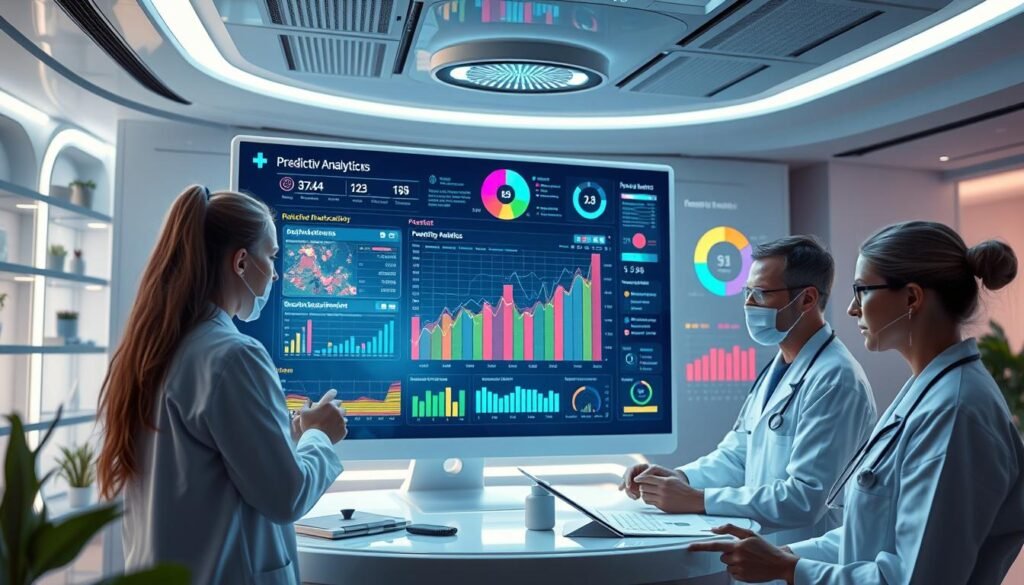
Predictive models help find people at risk for chronic diseases. This lets doctors start preventive care early. This can stop diseases like diabetes and heart disease, which cost a lot in healthcare in the US.
| Usage | Advantage |
|---|---|
| Predicting patient outcomes | Efficient resource allocation |
| Risk assessment for chronic diseases | Preemptive healthcare |
| Reducing hospital readmissions | Enhanced follow-up care |
| Optimizing appointment scheduling | Lower no-show rates |
Predictive analytics is key in managing population health. It spots people at high risk for chronic diseases early. This lets doctors tailor care plans to prevent health problems. Anthem uses predictive models to create personalized health plans and messages.
Predictive analytics changes how we engage with patients. It helps doctors understand patient behavior. This lets them create better communication plans, making patients more involved in their health.
Predictive analytics tools also fight fraud by spotting unusual data patterns. They help keep patients and doctors safe. Plus, they help keep medical equipment, like MRI machines, running smoothly. This ensures healthcare runs smoothly without interruptions.
In summary, predictive analytics in healthcare leads to early disease detection. It also makes patient care more proactive and tailored to each person’s needs.
Personalized Medicine and Tailored Treatments
Healthcare data is growing fast, at 36% each year until 2025. Genomic data analysis plays a big role in personalized medicine. New tech lets us find specific genetic changes in diseases like cancer. This helps make treatments that work better for each person.
The Human Genome Project gave us a map of human genes. This helps us understand diseases better. It leads to custom treatment plans based on each person’s genes. Big data from genes, proteins, and more helps us see how diseases work.
Genomic data analysis makes medicine more precise. It helps predict who might get sick based on genes and more. Machine learning makes these predictions even better, beating old methods.
Genetic differences affect how well drugs work. For example, warfarin’s effect changes with certain genes. Knowing this lets doctors tailor treatments for better results and safety.
Companies like GE Healthcare and Dassault Systèmes are creating digital twins. These digital models mimic organs and how they react to treatments. The Living Heart Project is one example, aiming to create detailed digital hearts for simulations.
Data science helps make treatments more precise and less harmful. It’s key in developing new cancer treatments. As we invest in better tech, personalized medicine will keep improving, leading to more health breakthroughs.
Data Science Applications in Healthcare
Data science has changed healthcare a lot. It helps manage and analyze medical imaging and wearable tech data. This includes scans like MRIs, X-rays, and CAT scans. It gives deeper Medical Imaging Insights for better screening, diagnosis, and prognosis.
Predictive analytics can also predict medical conditions. This helps make timely clinical decisions. It improves patient outcomes too.
Wearable tech in healthcare, like smartwatches and fitness trackers, is very important. It gives vital data for real-time patient monitoring and health management. Advanced data science techniques help healthcare providers.
They can monitor chronic conditions and track patient metrics. This leads to personalized care. It also makes patient engagement better and helps in proactive and preventive care.
The mix of healthcare and technology has brought new ideas. It uses a lot of clinical data, including Electronic Health Records (EHR). Good data management and analysis are key.
They help process, organize, and use the huge healthcare data every day. This ensures accurate medical insights and better patient care.
Challenges in Implementing Data Science in Healthcare
Data science in healthcare is promising but faces big hurdles. One major challenge is data privacy in healthcare. Health records are very sensitive, so protecting them is a big task.
Another big issue is the ethics of handling data. It’s important to get consent and be clear about how data is used. Healthcare workers also need special training to use data science tools well.
Healthcare data security is also a big deal. Keeping data safe from hackers is hard and adds to the complexity. Handling big data in healthcare is another big challenge.
The table below outlines the specific challenges and their implications in the healthcare sector:
| Challenge | Implication |
|---|---|
| Data Privacy | Requires stringent measures to protect patient information. |
| Ethical Considerations | Necessitates secure patient consent and transparency. |
| Training and Expertise | Need for specialized training among healthcare providers. |
| Data Security | Protection against breaches and cyber-attacks. |
| Complex Data Analysis | Challenges in analyzing vast, complex clinical data sets. |
To overcome these challenges, we need to work together. Experts in tech, healthcare workers, and regulators must join forces. We must find a balance between innovation, ethics, and security to fully use data science in healthcare.
Artificial Intelligence and Machine Learning in Healthcare
Artificial intelligence (AI) and machine learning (ML) are changing healthcare. They help create models that predict risks over time. This is a big step up from just looking at one-time risk factors.
AI-Powered Diagnosis means better care for patients. It keeps getting better as it learns from new data. This helps doctors and nurses give the best care possible.
More data from electronic records and wearables is driving AI and ML in healthcare. These tools use big data to make healthcare better. AI helps doctors make accurate diagnoses and manage patient data.
Hospitals use AI to track patients and manage resources. This was really helpful during the COVID-19 pandemic. AI helped them keep up with the demand for care.
Predictive modeling is key for better healthcare. It helps make care safer and more efficient. It solves real-world problems in healthcare.
AI improves clinical predictive algorithms. This helps address issues with training data and how well AI works in different places. It also uses data from vital signs and waveforms to help doctors make quick decisions.
AI is used in many areas of healthcare, like radiology and genetics. It helped find the genetic sequence of SARS-CoV2 and develop vaccines. Machine learning is used for disease prediction and image detection.
Support Vector Machines and Artificial Neural Networks are used for classification and image detection. Unsupervised learning, like k-Means, helps analyze data in healthcare.
Deep Belief Networks find features and correlations. Convolutional Neural Networks are good at detecting anomalies and recognizing images. AI is making healthcare more efficient and improving patient outcomes.
Improving Operational Efficiency in Healthcare
Healthcare groups are always looking for new ways to work better. They use data analytics to understand how to use resources well. This helps them make smart choices and save money. Resource Allocation Optimization is key to this goal.
Using medical equipment wisely can save up to $12,000 per bed each year. This cuts down on waste and makes the most of what they have. By tracking how often devices are used, they can find out when to replace them and avoid security risks.
Making technology simpler is also important for operational efficiency. Most healthcare leaders see its value, but many are just starting. Knowing what devices they have helps them work better.
Predictive analytics helps manage patient flow well. This means patients get care on time, which makes them happier and staff more productive. Using these strategies leads to better care, smarter budgeting, and a better healthcare experience.
Healthcare data analytics falls into four types, each helping in different ways:
- Descriptive Analytics
- Diagnostic Analytics
- Predictive Analytics
- Prescriptive Analytics
These types help not just use resources better but also engage patients and prevent illnesses. This makes healthcare more focused on patients.
| Benefit | Description | Result |
|---|---|---|
| Improved Patient Outcomes | Early intervention and personalized treatment plans | Better health and recovery rates |
| Enhanced Operational Efficiency | Streamlining processes and managing resources effectively | Reduction in costs and wastage |
| Preventive Care Advancement | Identifying risk factors and implementing preventive programs | Lower incidences of chronic diseases |
| Improved Patient Engagement | Empowering individuals with personalized health management | Higher patient satisfaction and adherence |
Improving resource use in healthcare does more than just help patients. It also makes healthcare more financially stable and efficient. For healthcare providers, using data analytics is a smart choice for long-term success.
Data Privacy and Security in Healthcare
Keeping patient confidentiality and protecting sensitive healthcare data is key today. Tiga Healthcare Technologies manages over 10 billion health records securely. This shows how important it is to follow strict data privacy rules. HIPAA compliance in healthcare is a big part of this.
Protecting patient data involves many steps. Here are six important ones for healthcare organizations:
- Using data encryption for secure data transfer
- Implementing antivirus applications to block viruses
- Employing system monitoring apps for detecting suspicious activity
- Enabling multi-factor authentication for enhanced security
- Utilizing ransomware protection tools to prevent malware attacks
- Conducting employee training on cybersecurity best practices
Tiga Healthcare Technologies handles over 250 million daily transactions safely and quickly. They use systems like the Central e-Prescription System and the Pharmaceutical Track and Trace System (DrugXafe). These systems protect over 33 billion pharmaceuticals and 125 million patient records.
But, healthcare organizations face big challenges in keeping data safe. The five biggest challenges are:
- Health information exchanges needing secure data transmissions
- User errors in technology adoption due to lack of training and computer skills
- Hackers targeting healthcare organizations for financial gain or “hacktivism”
- Security risks from cloud and mobile technology adoption
- Vulnerabilities from using outdated technology
Despite these challenges, following high data protection and privacy standards keeps health data safe. Tiga Healthcare Technologies focuses on data security and confidentiality. They use advanced technologies to reduce risks.
| Challenges | Examples |
|---|---|
| Security risks with cloud/mobile technology | Health information exchanges, DDoS attacks |
| User Errors | Lack of training, low computer skills |
| Hackers | Phishing, ransomware, data breaches |
| Outdated Technology | Increased vulnerability |
Keeping data privacy and security is more than a rule; it’s a promise to patients and the healthcare system. By always updating these measures, healthcare providers can keep patient data safe. This builds trust and fulfills their duty to Regulatory Compliance.
Global Impact of Data Science on Healthcare
Data science has greatly influenced global healthcare strategies. It has improved Public Health Interventions a lot. Market studies show a 19.2% growth rate for big data in digital health from 2022 to 2032. This shows how valuable data science is for healthcare.
Data science helps analyze Electronic Health Records (EHRs). This is key for tracking and studying disease outbreaks worldwide. Wearables and Digital Health Technologies (DHTs) also provide a lot of data. This data includes activity and sleep patterns, making health datasets even richer.
Genomic data analysis, using DNA sequencing, is another big part of data science in healthcare. Machine learning algorithms help analyze these large data sets. This leads to better patient care all over the world.
The table below shows the main Big Data Analytics (BDA) elements used in healthcare:
| Key BDA Elements | Description |
|---|---|
| Medical Records | Data from patient history and treatment |
| Sensor Data | Data from wearables and health devices |
| Ethical Considerations | Keeping data private and secure |
| Technology Integration | Using digital tools for better analysis |
| Hospital Administration | Improving operations with data |
| Customized Care | Personalizing treatment plans |
Data science also helps with disease surveillance. It uses EHRs and the internet for precise analysis. This helps create strong Public Health Interventions.
It makes pandemic response strategies better. It also helps evaluate treatments and plan healthcare services. Data processing and cleaning have improved a lot. This saves a lot of time for data scientists.
The impact of data science on healthcare is very promising. It brings big benefits to public health, disease management, and patient care.
Data Science for Medical Research
Data science is changing medical research in big ways. It gives deep insights into clinical trials and leads to new discoveries. Programs like the UCLA Master of Data Science in Health (MDSH) prepare experts for the growing data needs in healthcare and beyond.
Clinical Trials Analytics is key in making trials better and faster. It helps manage big data research, thanks to new computing tech. This speeds up finding treatments and cuts down trial costs.
UCLA MDSH graduates get jobs at top places like 23andMe and Google. The 20-month program teaches data engineering, visualization, and machine learning. It prepares them to work with huge health databases.
Data science in clinical research leads to better healthcare. It allows for early treatments and better patient care, even in tough cases like neurological cancers. Clinical trials analytics are making healthcare more affordable and tailored to each patient.
But, data science in clinical research also has challenges. Keeping patient and research data safe is a big one. Yet, the benefits of Clinical Trials Analytics are huge. They are changing medical research for the better, making treatments more effective and affordable.
Data-Driven Healthcare Solutions for Doctors and Hospitals
Doctors and hospitals can make better choices with data-driven healthcare solutions. Decision Support Systems use big data to help with diagnosis and treatment. They work well with telemedicine, making quality care possible from anywhere.
Predictive analytics is very helpful, cutting down on hospital readmissions. It spots patients at risk early, helping them stay out of the hospital. This approach also makes healthcare operations more efficient and cost-effective.
- Early detection of diseases like diabetes and heart issues is made easier with proactive care.
- Data analysis helps manage resources better, saving money and improving efficiency.
- Identifying high-risk patients early leads to better care and a stronger reputation for healthcare providers.
Decision Support Systems also help catch fraud, like billing errors, making healthcare more reliable. Focus on data security, making systems work together, and teaching patients about telemedicine and AI is key.
Using Electronic Health Records (EHR) has cut down diagnostic times by 25%. Companies like Touch Surgery and Caption Health are leading the AI charge, giving doctors real-time insights. Wearables and devices have also cut heart failure readmissions by 12%, showing their value in healthcare.
The healthcare analytics market is expected to hit USD 133 billion by 2029. Using data science to improve diagnosis, treatment, and disease management is essential. Decision Support Systems and predictive analytics will keep changing patient care, leading to better, more efficient healthcare.
Future Trends in Data Science for Healthcare
The healthcare world is changing fast, thanks to new data science tools and genomic research. Predictive algorithms are getting better, helping doctors predict and improve treatment results.
Healthcare is moving towards more personalized analytics. By 2024, we’ll see big changes as these new tools become part of daily work. Cloud computing is already used by 70% of healthcare companies, showing a future where data is easily accessed and used quickly.
Next-Generation Genomic Insights
Genomic insights will get even more powerful with data science. Advanced predictive models will use detailed genomic data, making personalized medicine more precise. This means doctors can tailor treatments better than ever before.
- In 2024, wearable devices and remote monitoring will become more common, giving doctors real-time data for better decisions.
- Blockchain technology, despite challenges, will grow for keeping health records safe and managing supplies.
- AI and machine learning will help automate tasks like scheduling and treatment plans, making things more efficient.
- Telemedicine and telehealth will grow, thanks to digital health, creating a system for remote patient care.
By 2024, healthcare will start using blockchain for managing data, aiming to improve how well systems work together and keep data safe.
| Trend | Impact |
|---|---|
| Predictive Analytics | Helps find health problems early, leading to better care and outcomes. |
| Wearable Devices | Provide ongoing health data, reducing the need for doctor visits and keeping patients monitored. |
| Blockchain Technology | Makes data safer and improves supply chain management, ensuring health records are secure. |
| Artificial Intelligence | Improves diagnosis speed and accuracy, and automates tasks, boosting efficiency. |
Predictive Modeling Advances are not just a trend but a key part of healthcare’s future. By using these new technologies, healthcare can offer more precise and effective care.
Conclusion
The healthcare transformation through data science has changed patient care and made things more efficient. As technology grows, more data scientists are needed. They use the huge amounts of medical data to create models that spot risks early.
This can save many lives by acting quickly. It’s a big step forward in healthcare.
Healthcare data isn’t just about predicting the future. Medical imaging has improved a lot. MRI and CT scans give detailed pictures of the body, helping doctors make accurate diagnoses.
By looking at all this data, doctors can give treatments that really work for each patient. This makes patients happier and healthier.
Data science also helps make better decisions by using resources wisely. It makes workflows smoother. This is true in many areas of healthcare, from finding new treatments to preventing bad outcomes.
The future looks bright with more use of artificial intelligence and machine learning. These tools will make healthcare even better. But, we need to keep working on data privacy and training more experts.
FAQ
What is the significance of data science in healthcare?
Data science is key in healthcare. It helps improve patient care and makes operations more efficient. It analyzes big data to make healthcare better.
How has data science evolved in the healthcare industry?
Data science in healthcare started in the 1960s. It has grown to impact policy and daily care. It has changed healthcare analytics and personalized medicine a lot.
What are the applications of predictive analytics in healthcare?
Predictive analytics uses data to predict health outcomes. It helps find diseases early and assess risks. It also customizes care, improving health decisions.
How does personalized medicine benefit from data science?
Personalized medicine uses data to tailor treatments. It looks at genetics, lifestyle, and environment. This makes treatments more effective.
What are some specific applications of data science in healthcare?
Data science improves medical imaging and uses wearable data. These uses show how data analytics helps in diagnostics and care.
What are the challenges in implementing data science in healthcare?
Challenges include keeping data private and secure. There are also regulatory issues and managing big data. These must be solved for data science to work well.
How do AI and machine learning improve healthcare?
AI and machine learning boost diagnosis and automate tasks. They make healthcare more efficient and effective. AI tools and automation are key.
How does data science improve operational efficiency in healthcare?
Data science makes healthcare operations better. It improves resource use and workflow. This reduces waste and improves service.
What measures are in place to ensure data privacy and security in healthcare?
Healthcare follows rules like HIPAA for privacy and security. It uses strong security and keeps patient data safe in digital records.
What is the global impact of data science on healthcare?
Data science helps global health by guiding public health efforts. It improves pandemic response and tracks outbreaks. It supports managing health crises worldwide.
How does data science accelerate medical research?
Data science speeds up medical research. It optimizes clinical trials and leads to new discoveries. This means faster and better treatments.
How do data-driven healthcare solutions assist doctors and hospitals?
Data solutions help doctors and hospitals with decision support and telemedicine. They offer better care options, even remotely.
What are the future trends in data science for healthcare?
Future trends include better predictive models and genomic data use. These will improve personalized medicine and treatment, driving healthcare innovation.




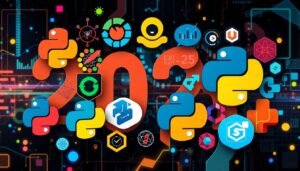
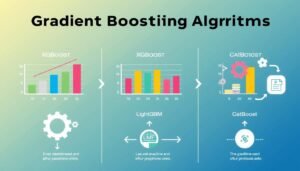

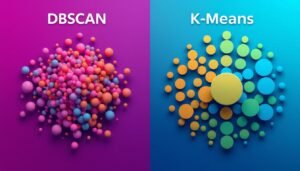
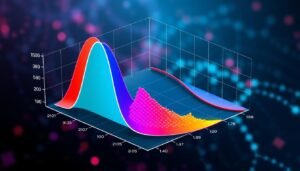

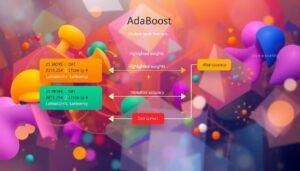




8 thoughts on “Data Science in Healthcare: Real-Time Insights for Better Decisions”
Hello There. I found your weblog the use of msn. This is an extremely neatly written article. I will be sure to bookmark it and come back to read more of your useful info. Thanks for the post. I’ll definitely comeback.
It¦s really a great and useful piece of info. I¦m happy that you shared this helpful info with us. Please stay us informed like this. Thank you for sharing.
Enjoyed looking through this, very good stuff, thanks.
Well I really enjoyed reading it. This post procured by you is very helpful for proper planning.
Hello, I think your website might be having browser compatibility issues. When I look at your blog in Chrome, it looks fine but when opening in Internet Explorer, it has some overlapping. I just wanted to give you a quick heads up! Other then that, wonderful blog!
It’s actually a cool and helpful piece of information. I’m happy that you simply shared this useful information with us. Please keep us informed like this. Thanks for sharing.
I just couldn’t go away your website prior to suggesting that I actually loved the usual info a person provide on your visitors? Is gonna be back incessantly to inspect new posts.
I really appreciate this post. I¦ve been looking everywhere for this! Thank goodness I found it on Bing. You’ve made my day! Thanks again